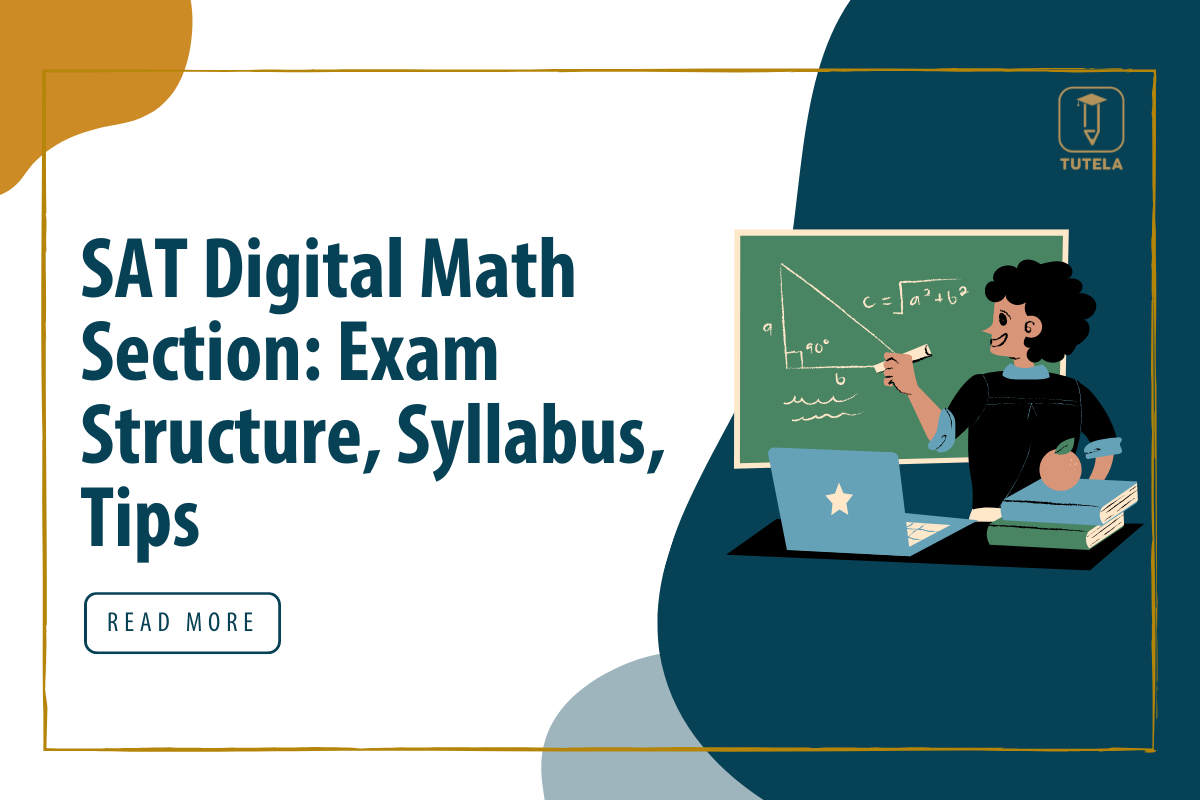
The SAT exam is a crucial aspect of college admissions, and a high score can help you stand out from the crowd. With the launch of the new Digital SAT format, it's important to understand the changes to the Math section and how to best prepare for it. In this article, we'll dive into the SAT Digital Math section, providing you with everything you need to know to maximize your score.
Section 1: Reading and Writing
Section 2: Reading and Writing (Dynamic)
Section 3: Math
Section 4: Math (Dynamic)
SAT Digital Total Number of Questions and Timing:
The SAT Digital Math section consists of two sections, each containing 22 questions. You will have 35 minutes to complete each section, giving you a total of 70 minutes for both sections. It's important to note that the new SAT Digital is adaptive; hence the difficulty level of Section-4 depends upon the performance in Section -3. Also, the timing is strict, and you must complete each module within the allotted time.
The SAT Digital Math section covers a wide range of topics, including arithmetic, algebra, geometry, and data analysis. Here's a comprehensive list of topics that students can expect in the SAT Digital Math section, with the weightage of each topic in a section:
| Algebra |
|
7-8 Questions |
| Advanced Math |
|
7-8 Questions |
| Problem-Solving and Data Analysis |
|
3-4 Questions |
| Geometry and Trigonometry |
|
3-4 Questions |
Practice with Official SAT Practice Tests: The College Board, which administers the SAT, provides official practice tests that closely mimic the actual exam. These practice tests can help you become familiar with the format and types of questions you'll encounter.
Know the Calculator: You'll be allowed to use a graphing calculator during the SAT Math section, but it's crucial that you know how to use it efficiently. You can either carry your own graphing calculator to the exam centre or you can use the on-screen graphing calculator (Desmos), which is integrated into the exam software and is allowed. Spend some time practicing with a calculator and becoming familiar with its functions.
Review the Topics: Make sure you have a solid understanding of the topics covered in the SAT Math section, including arithmetic, algebra, geometry, and trigonometry. Consider working with a tutor or enrolling in a prep course if you need extra help.
Timing is Key: Practice managing your time effectively during the practice tests. Ensure you have enough time to answer all the questions, including checking your work.
Stay Calm and Focused: It's easy to become anxious during the exam, but remain calm and focused. Take deep breaths, and remind yourself that you've prepared for this.
Q: Is a calculator allowed during the SAT Digital Math section?
A: Yes, a calculator is allowed during both the SAT Digital Math sections. You can use your Graphing Calculator or the on-screen calculator (DESMO).
Q: How much time do I have for each module in the SAT Digital Math section?
A: Each module in the SAT Digital Math section is 35 minutes.
Q: What topics are covered in the SAT Digital Math section?
A: The topics covered in the SAT Digital Math section include arithmetic, algebra, geometry, and trigonometry.
Conclusion: The SAT Digital Math section can seem overwhelming, but with proper preparation, you can increase your score and reach your college goals. Make sure to practice with official SAT practice tests, become familiar with the calculator, review the topics, manage your time effectively, and stay calm and focused during the exam. By following these tips, you'll be well on your way to maximizing your score in the SAT Digital Math section.
Get one-on-one counselling from Tutela's experts: Contact Us.
Learn from the Mentors: SAT Math.